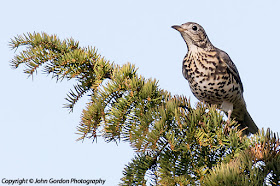Oct 16 2018 Verulamium Lake and Tyttenhanger
St Albans Herts UK
During this visit I had done all my birding in the south-west of the UK, one day in Gwent (Wales) another in Gloucestershire and a third day in Somerset. My final destination was St Albans just north of London in the south-east of England. A different part of the country that might just turn up a few surprises. It's one of the two areas in SE England where Tree Sparrows can be found. St Albans also has rich history dating back to Celtic and Roman times, something I was eager to explore. I have included a link about St Alban's, besides where else on this trip could I combine so much history and birding at the same time.
 |
| Verulamium Park in St Albans. |
Close by is Verulamium Park, with lawns, a wooded area, a river and pond contained a good selection of birds. I wandered around with the Nikon P900, the 24mm-2000mm bridge camera that can shoot Roman remains one moment and birds the next.
 |
| Verulamium and the site of the mosaic below AD 46. |
 |
| The floor of a Roman town house showing the underground heating system . |
 |
| Moorthen |
***
Prior to my visit I had sent out some feelers via Birding Pal to birders in the area. This would be my last serious day of birding before returning to Vancouver and wanted to make the most of it. I had made contact and corresponded with Alan Gardiner, who is also the Herts County recorder. A really good guy to bird with as he is up to speed with all the latest sightings.
Prior to my visit he sent me heaps of information about birding in the St Albans area and even made out a wants for me.
Alan picked me and we headed for nearby Tyttenhanger Gravel Pits a few miles outside St Albans.
 |
| Tyttenhanger Gravel Pits. |
Our first stop was to look for a Little Owl. The owl was there, tucked inside a hole of an oak tree but unfortunately was only partially visible, too bad, I wasn't going to count it unless I had a better view. Perhaps next time.
We continued through a mixed forest where the trees held mostly Goldcrests and Blue Tits. We did however come across a huge badger set.
 |
| Badger set |
Exiting the woods we had a Kestrel, a Chiffchaff and around the lake were a good selection of birds including Great Cormorant, Little Egret, Pied Wagtail, all kinds of ducks and a Caspian Gull. A full is included below.
As the day wore on we had a great sighting of Red Kite and eventually the Tree Sparrows, a bird that is becoming increasingly rare and localized in the UK.
 |
| Red Kite |
 |
| This bird is banded part of a concerted effort to help out a fragmented population |
 |
| Tree Sparrow |
Before leaving the Tyttenhanger car park a flock of Linnet alighted on the fence.
 |
| Linnet |
Here is the website to for those interested in birding the area.
http://www.hnhs.org/herts-bird-club/home
Late in the afternoon we made our way out to a farmers field where had I been on my own I would have just driven by. Thanks to Alan we were soon into Red-legged Partridge, the third lifer of the day.
We made our way to the highest vantage point in search of a Yellowhammer, the wind was blowing but after about ten minutes a single yellowhammer flew over, making it my 100th species of the trip. The perfect way to conclude my UK visit.
Late in the afternoon we made our way out to a farmers field where had I been on my own I would have just driven by. Thanks to Alan we were soon into Red-legged Partridge, the third lifer of the day.
 |
| Red-legged Partridge |
We made our way to the highest vantage point in search of a Yellowhammer, the wind was blowing but after about ten minutes a single yellowhammer flew over, making it my 100th species of the trip. The perfect way to conclude my UK visit.
It's never too late to start birding"
John Gordon
Langley/Cloverdale
BC Canada







































